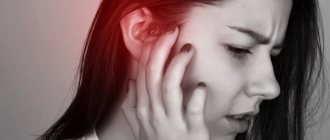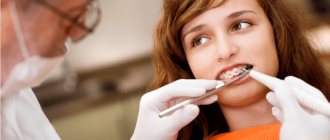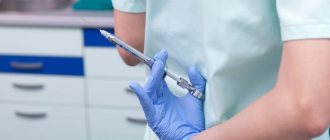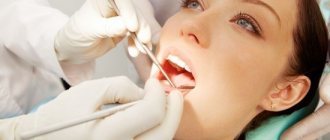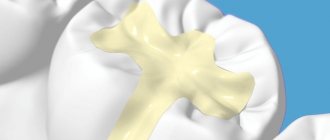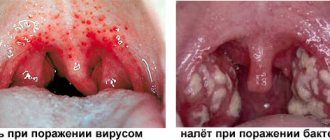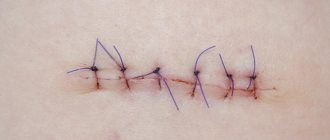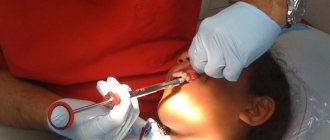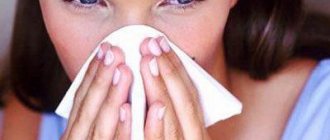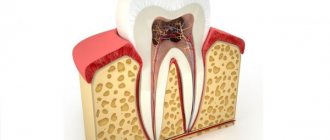- Published by: Laima Jansons
Ear pain is always a signal that something is wrong, and not necessarily with the ear. But if pain appears when pressing on the tragus, this is always evidence of the development of an infectious process or a consequence of previous traumatic brain injuries , and any mechanical injury to the ear.
Photo 1. Both infection and injury can provoke a pain symptom. Source: Flickr (Holly Williman)
Causes
The auditory organ is distinguished not only by its complex structure, but is also a frequently affected area. If pain appears when pressing on the auricle, this indicates the presence of an infection or inflammatory process inside the ear canal, or severe hypothermia. If you ignore the problem and do not treat it, this can lead to dysfunction of the auditory tube.
There are several main causes of pain:
- Initially, you need to accurately classify the unpleasant sensations. If your ear hurts, then there may be inflammation of the perichondrium or periochondritis. The inflammatory process can be either primary or secondary. Most often, the inflammatory process occurs in the area of the cartilage of the larynx or in the auricle.
- Unpleasant pain can occur as a result of the bite of various insects;
- If the auricle hurts, then a possible cause is a severe burn. Most often this occurs during the hot season.
- Painful sensations can be caused by a lack of personal hygiene or its abuse.
Many people try to clean the ear canal as much as possible, putting maximum effort into this matter. There is no need to do this. Firstly, a small amount of sulfur must be inside the ear canal. Secondly, when actively cleaning the ear, you can damage the soft tissues, which will result in the active release of sulfur, which will lead to the formation of a cerumen plug.
To maintain personal hygiene, it is enough to clean only the outer ear of wax.
- Presence of fluid in the ear. Many people begin to experience unpleasant pain after any liquid gets into the ear canal. It is worth noting that if water comes from the sea, reservoir or public pool, it contains a large number of microbes, which, if not removed in a timely manner, can lead to the development of infection.
- A boil or acne is a common reason due to which a person begins to experience discomfort outside and inside the ear.
- Neurological disorders.
- Various dermatological eczemas also lead to pain on the outside of the ear.
- Integrity of the eardrum. Its perforation can cause severe pain, which is felt not only inside the ear, but also outside.
- Problems with the Eustachian tube. Its dysfunction is a common cause of pain on the outside of the ear.
- Ears are broken.
If your ears hurt and the effect only intensifies when touched, then you need to contact a qualified specialist as soon as possible. Regardless of the reason why a person begins to feel discomfort, in the absence of the necessary timely help, lumps and balls begin to appear inside the auditory organ, which are filled with pus. After some time, such neoplasms can reach the blood vessels. As a result, pus enters the bloodstream, spreads throughout the body and causes death.
Treatment
Treatment of ear diseases is a purely individual plan, which is prescribed by the attending doctor and monitored until the patient recovers. The patient is required to follow all recommendations and complete a number of appointments.
It is not worthwhile to independently carry out treatment using the medications available at hand, no matter if it is an adult or a child, as this may lead to the situation getting out of control. Ignoring precautions can not only lead to an exacerbation of symptoms, but also a worsening of the disease.
Medication
The drug type of treatment is prescribed not only in the presence of an inflammatory process inside the auricle. Thus, certain types of drugs are prescribed to patients who have serious pain and unpleasant symptoms accompanying the disease.
Medicines are prescribed individually. After conducting an examination and collecting an anamnesis, the victim receives prescriptions, which most often include anti-inflammatory drugs, drops, lotions, painkillers.
Learn more about how to treat ear pain in our video:
Therapy at home
If the pain in the ear is unbearable, and a visit to the doctor is scheduled for tomorrow at best, then you can resort to some manipulations that will help alleviate the general condition and relieve pain.
First you need to make an alcohol compress, which you need to wrap your ear and leave it like that for several hours. The compress is made like this: clean gauze is soaked in alcohol and applied to the ear. The next step is to cut out the cellophane with a hole for the ear. The most important point is to fix the compress correctly.
If a person is very bothered by pain, then you can try to relieve it with standard painkillers. If your health sharply worsens, then it makes sense to immediately consult a doctor by calling the ambulance number.
Similar manipulations can be carried out with children and expectant mothers. However, in the case of pregnant women, it is worth remembering that taking pills can affect the condition of the fetus, so self-medication is not appropriate in any case.
Heating the ear for treatment purposes is also not worth it. After all, heating can provoke suppuration and worsening of the inflammatory process, if any.
This treatment can only be carried out by a qualified doctor. After first aid is provided, the patient is sent to a medical facility. The patient will be monitored in the future.
First aid for ear pain:
Pain in the cartilage of the auricle
If the cartilage of the auricle is damaged, there may be pain on the outside of the ear. A person begins to experience very unpleasant pain that prevents him from concentrating, working normally and sleeping. As a result, irritability and fatigue increase. Unfortunately, pain tends to radiate to other parts of the head, which can cause the patient to complain of severe headaches.
Why does ear cartilage hurt? The disorder can arise as a result of a wide variety of factors, ranging from mechanical damage to the ear, and ending with inflammatory processes or an allergic reaction.
Treatment depends on the cause that provoked the pain. There are several main reasons why ear cartilage may hurt.
What else happens?
If a child or an adult has pain on the outside of the ear, it may be due to damage to the cartilage of the organ. Most often it is caused by an injury. You can damage the cartilage, get frostbite or burn. It is distinguished by its elasticity and flexibility, due to which injuries to this area are quite rare. If there was a strong blow here, the tissues are cut or torn, the pain will probably bother you for quite a long time - until the area heals.
In most cases, patients are concerned about why the outside of their ears hurt in the absence of obvious injury. There are several possible reasons: the sensations can be provoked by an allergic reaction, local infection, or inflammatory processes in the nervous system. The cartilage responds with pain if the nerves are affected: glossopharyngeal, intermediate, trigeminal.
There are cases where the symptom indicated perichondritis, that is, inflammation localized in the perichondrium and skin. If all the ear cartilages are covered by an infectious process, the doctor defines the condition as chondroperichondritis. It often follows an untreated cold that has led to complications. To eliminate such risks, you need to start therapy on time.
If the ears hurt on the outside, pressing on this area is painful and unpleasant, swelling of the external part of the organs is bothersome, redness of the tissues is observed, we can assume that this is purulent perichondritis. Most patients suffering from this disease complain of general weakness and malaise. To make such a diagnosis, you need to go to the clinic.
Treatment is prescribed comprehensively. They will prescribe medications to eliminate pathological microflora, anti-inflammatory drugs. In some cases, the use of antiseptics for local tissue treatment is indicated. To improve the general condition and increase the protective functions of the body, vitamin and mineral complexes, probiotics and other drugs that are beneficial for the immune system are prescribed.
Injury
If the auricle hurts, then it is quite possible that the cause is an injury to the hearing organ. Tissue damage, cartilage puncture, strong blow or inflammatory process - all this will be accompanied by pain.
Painful sensations can be provoked by the following factors:
- Frostbite;
- Burn;
- Exposure to chemicals;
- Exposure to cold wind.
In this case, various treatment methods can be used, ranging from the use of an antiseptic to the use of ointment to relieve the tumor. When the injury begins to heal, the process will be accompanied by itching. Sometimes it can be very strong, causing a person to experience great discomfort. In this case, the specialist prescribes antihistamines to the patient.
If a serious injury to the auditory organ occurs, antibacterial drugs may be required to avoid infection.
Painful sensations can also provoke partial separation of the auricle. In some cases, its complete separation is diagnosed. In this case, urgent surgical intervention is necessary. You need to act as quickly as possible, as an inflammatory process may begin to develop, which will negatively affect the result of the operation.
What not to do?
Self-medication for swelling and pain of the earlobe is strictly not recommended. Self-therapy, carried out without consulting a doctor, can provoke dangerous consequences.
It is also worth remembering that under no circumstances should you perform the following actions on your own:
- Squeeze out the wen. The neoplasm is surrounded by a capsule, the rupture of which from improper physical impact can lead to the penetration of pathological contents into the surrounding tissues, after which the development of an inflammatory process will begin in them.
- Apply warm compresses to the affected area. They will provoke activation of pathogenic microflora and aggravation of the disease.
- Take medications independently, without consulting a specialist, or carry out local treatment of the inflammation.
Compliance with these precautions will help prevent the development of serious consequences that are possible with this pathological process.
Nerve damage
If your outer ear often hurts, a specialist will tell you what to do. This may occur as a result of damage to the trigeminal, intermediate or glossopharyngeal nerve. When inflammation affects the trigeminal nerve, pain is observed around the auricle. If the inflammatory process is localized in the nerve trunks near the face, then unpleasant sensations are observed in the cartilage itself.
There is strong pressure in the ear cavity, which is accompanied by pain when chewing or forcefully opening the mouth. After 3-4 days, a rash with a clearly expressed herpetic character may form on the surface of the skin. To get rid of this problem, the patient is prescribed medications that have an analgesic effect and the required amount of vitamins. Additionally, physiotherapeutic procedures are used.
Throbbing pain on the left behind the ear when pressing on the bone: what to do
It is worth being careful when figuring out what needs to be done for otitis when a significant period of time has passed since treatment was started, and its symptoms continue to be expressed by pain, which even nimesil, paracetamol, propolis tincture, menovazin and furatsilin cannot relieve.
At the same time, the child complains that now it is no longer aching, but shooting, and is localized directly next to the ear and lasts for a long time. Moreover, if it cannot be anesthetized, relieved, relieved, calmed, or it has already developed into some complications that are caused by otitis media, then competent, conscious families immediately call an ambulance.
In cases where the body’s defenses are particularly weakened, the situation may even worsen to the point where erysipelas begins in the nearby skin, especially on the side of the face.
Only a hospital will be able to provide everything necessary to determine why the first signs that accompany otitis media in children have been replaced by severe pain in the ear and high fever, which requires only qualified first aid to respond to.
Diagnosis of this problem should be taken seriously and seek treatment from doctors, since its symptoms are similar to those of many other health problems. This means that an incorrect diagnosis can worsen the situation.
Infections and inflammatory processes
The inflammatory process can affect the outer, middle and inner ear. If a patient is diagnosed with otitis externa, it will be accompanied by unpleasant pain inside the ear cartilage and in the area of the auricle itself.
Pain occurs as a result of the activity of bacteria that penetrate into the auditory organ and cause inflammatory processes there.
Inflammation of the outer ear may result from mechanical damage to the cartilage. In this case, inflammation of the sebaceous glands is observed. The unpleasant sensation can be quite intense and intensifies during active jaw movement.
Harmful microorganisms that penetrate the auditory organ can trigger the development of diffuse otitis media. In this case, unpleasant pain sensations will be observed not only outside the organ, but also inside it. The inflammatory process can quickly reach the eardrum, which will only enhance the effect. Very often, the ear cartilages begin to hurt with an illness such as perichondritis.
Causes of earlobe pain
Any experienced doctor knows that it is very difficult to immediately understand why the outer part of the patient’s auditory system hurts. The condition is possible due to injury, including that caused by pressure. There is a possibility of an insect bite that a person did not even notice. Some people get ear ache because they don't clean them properly.
If hygiene rules are not followed, sulfur plugs are formed. External symptoms may occur due to water entering the internal area. Possible deterioration of the Eustachian tube or neurological disease. Pain in the outer part of the ear is a signal of acne, boil, or dermatological disease.
If the painful sensations are pulsating and accompanied by shooting, it may be otitis media. To correctly determine the cause of the condition, you need to come to the hospital. You don't need to do anything to your ear before doing this. When the pain is unbearable, you are allowed to take painkillers.
When asked by patients about why external ear pain occurs, specialists answer that its origin is directly related to the development of the inflammatory process. Inflammation in the earlobes can have different origins.
What to do if your earlobe hurts?
The list of reasons that provoke it is quite wide:
- Allergic reaction. Under the influence of an allergen, the earlobe can become inflamed and swollen, which provokes inflammation with the appearance of itching and pain.
- Oncology. Quite rare, but very dangerous reason. Only a specialist can distinguish a malignant ear tumor from a pathological phenomenon that arose under the influence of safer factors after conducting a histological examination.
- Abscess. It develops as a result of poor-quality puncture of the lobe and the introduction of pathogenic microorganisms into the wound that provoke inflammation.
But most often, the prerequisite for the appearance of an inflammatory process in the lobe, accompanied by severe pain, is atheroma, which is popularly called a wen. Its appearance is associated with excessive production of sebaceous secretion, which “clogs” the gland. Initially, atheroma looks like a small soft ball in the earlobe and does not pose a threat to health, but after the excess amount of sebum is colonized by pathogenic microorganisms, the process of inflammation begins in the earlobe.
Inflammatory process
Many people do not understand why the ear begins to hurt, so starting treatment on their own in this case becomes a very dangerous task. There are several diseases in which the ear can hurt not only outside, but also inside it. This effect is provoked by a strong inflammatory process that affects soft tissues and quickly spreads through them.
- Otitis
This is an inflammatory process that often affects the middle part of the hearing organ. Signs of this disease include aching pain that radiates to the jaw, temple and outer ear. The inflammatory process that occurs externally is often caused by decreased immunity and the negative impact of microorganisms on soft tissue. As a result of the whole process, a boil may form, after which treatment becomes a little difficult. Additional symptoms include increased body temperature, increased irritability, and a strong effect when touching a surface. The danger of this pathology is that it can very quickly affect bone tissue, so when the first symptoms occur, you must urgently seek help from a qualified specialist.
- Periochondritis
This topic has already been touched upon a little above, but it deserves close attention. Bacteria attack the ear cartilage, which often occurs after pneumonia, flu and other diseases that are associated with the respiratory system. Initially, pain appears, which is better reflected at the site of the problem. In the early stages of the development of the disease, pain practically does not reach the jaw. A purulent cavity appears at the site of the inflammatory focus, which in no case should open on its own. In medical practice, there are cases where ignoring this rule led to death. In addition, there is a high probability of fistula formation, the treatment of which can take years. If the abscess opens on its own, the sensation only intensifies, you should urgently consult a specialist.
- Mastoiditis
In this case, the inflammatory process affects the mastoid process. In some cases, this disease is the result of previous otitis media. Symptoms include severe headache, fever, and severe pain outside and inside the auditory organ. The danger of the disease is that it can affect the bone tissue of the skull, but most often this is diagnosed in adult patients. In children, this disease is rarely diagnosed, but it immediately causes parents to be wary.
- Lymphadenitis
This disease manifests itself after hypothermia. It causes restriction of neck movement, plus severe pain that is felt outside the ear. Diagnosing and treating such an ailment is very simple, especially since a therapist can prescribe the correct treatment.
Otitis media
Another common cause of ear pain in a child is an inflammatory process. The main symptom of this disease is acute ear pain in a child. Children complain of shooting, boring pain, and tinnitus. Acute ear pain in a 6-year-old child can be of such intensity that children cry, scream, and cannot find a place for themselves. As the process spreads, dizziness, nausea, vomiting, and loss of coordination may occur.
Most often, a unilateral lesion is observed, although the child often experiences pain in the ears on both sides. The presence of inflammatory changes in the tympanic cavity leads to a deterioration in the conduction of sound from the tympanic septum to the auditory nerve. As a consequence, there is a decrease in hearing on the affected side, sometimes to the point of complete absence.
The typical course of inflammation of the middle ear is characterized by elevated body temperature.
Usually its indicators are degrees. However, at present, the modern trend in the development of otitis is a purulent, sluggish course, characterized by less pronounced clinical signs.
We invite you to familiarize yourself with Tooth Six: location, order and timing of teething in children, how teeth are numbered
In this case, a sharp pain in the child’s ear is replaced by heaviness or dull pain. Temperatures can also be significantly reduced. In some cases, the disease occurs even at normal temperatures. However, this is not evidence of a mild course of the disease. This course of exudative otitis is less treatable and is prone to the development of complications, including persistent hearing loss due to purulent melting of the bones of the tympanic cavity.
The main treatment method for purulent otitis media is antibiotic therapy.
It is proposed to use antibacterial agents, both in the form of ear drops and systemic drugs. The course of treatment should be at least 7-10 days. The duration of antibiotic use should be agreed with the otolaryngologist and depend on the results of otoscopy. Culture of the flora for sensitivity can be of great help in choosing effective antibacterial drugs.
It is also necessary to carry out measures to help restore the patency of the auditory tube.
To do this, vasoconstrictor drops are used in the nose; ear blowing, catheterization of the auditory tube, and pneumomassage of the eardrum can be used.
The need for all these measures depends on the clinical manifestations, the form of otitis, and the results of otoscopy. Techniques that are preferable for some clinical manifestations may be dangerous in the presence of other symptoms. The choice of treatment tactics belongs to the otolaryngologist, who in his prescriptions is based not only on complaints and objective manifestations, but also on the results of instrumental examination.
Helpful tips for dealing with ear pain
- If pain occurs outside or inside the organ, and there is no high temperature or other alarming symptoms, then the immune system itself will be able to overcome the problem. Sometimes panic can only harm the body, since many people begin to actively use traditional medicine methods, which prevents the body from overcoming the disease on its own. In order for the body to cope with such problems on its own, it is necessary to adhere to a healthy lifestyle and maintain your immunity;
- Sometimes the inflammatory process that occurs inside the ear can radiate strongly outwards. In this case, the patient will complain of severe pain outside the organ. To relieve inflammation, you can use ear drops with the desired effect. People who often suffer from such problems should always keep such an indispensable remedy at hand. It would be useful to supplement your home medicine cabinet with such products as Otipax, Polydex, Sofradex and even the most commonplace lidocaine 2% in ampoules;
- To relieve unpleasant pain inside and outside the ear, you can take ibuprofen or acetaminophen. If you are sure that the eardrum is not damaged, you can use pain-relieving ear drops. If such drops are not at hand, then an alternative option would be to use alcohol or vodka. A few drops of the selected product should be placed on the turunda, then inserted into the ear, and a warm scarf should be tied on top;
- It is not recommended to overuse antibiotics, as a large amount of them can have the opposite effect and significantly worsen the situation. If ear pain occurs quite often, then you should consult a specialist and get advice on what medications are best to use at such moments;
- Often, congestion can be observed with pain, but what to do if the level of hearing has decreased significantly, and the pain is practically not noticeable. In this case, you need to run to the doctor, because, most likely, a cerumen plug has formed in the ear canal, which is the main cause. You cannot remove it yourself, as you can worsen the situation and drive the plug even deeper into the ear.
Prevention
Preventative methods for ear diseases include:
- Preventing foreign objects from getting into the ear canal - people often clean their ears with pencils or fountain pens, without thinking that the objects are not only not sterile, but also hard. As a result, the inner lining of the ear canal is injured and infection occurs.
- Do not clean your ears with cotton swabs.
- Treat concomitant diseases in a timely manner - incompletely cured tonsillitis, sinusitis can be complicated by ear disease.
- Avoid injury.
- Take care of your own health - wear hats in the cold season.
- Clean your ears regularly with sterile cotton swabs to prevent wax plugs.
Compliance with the rules of prevention will almost completely eliminate the occurrence of pain behind the ears and their inflammation.
Is it possible to get rid of it?
When the ears hurt on the outside due to an inflammatory process in the auricle, it is necessary to begin treatment with antibiotics. In some cases, Penicillin and Erythromycin are indicated. Sometimes combined formulations are needed, which include Amoxiclav. The drugs are used systemically or locally - at the discretion of the doctor who understands the etiology of the disease.
If the process is very severe, there is a high probability of the lesion spreading to vital tissues, the person may be admitted to a hospital for treatment. You should not prescribe antibiotics on your own, assuming that your ear pain is due to bacterial invasion. Unjustified use of drugs is accompanied by the risk of superinfection that is resistant to most antimicrobial drugs. Coping with such a disease will be very difficult.
The course of treatment is usually supplemented with pre- and probiotics. They somewhat smooth out the side effects of antimicrobial drugs. The duration of the antibacterial course is from a week to two, rarely a longer duration is necessary.

